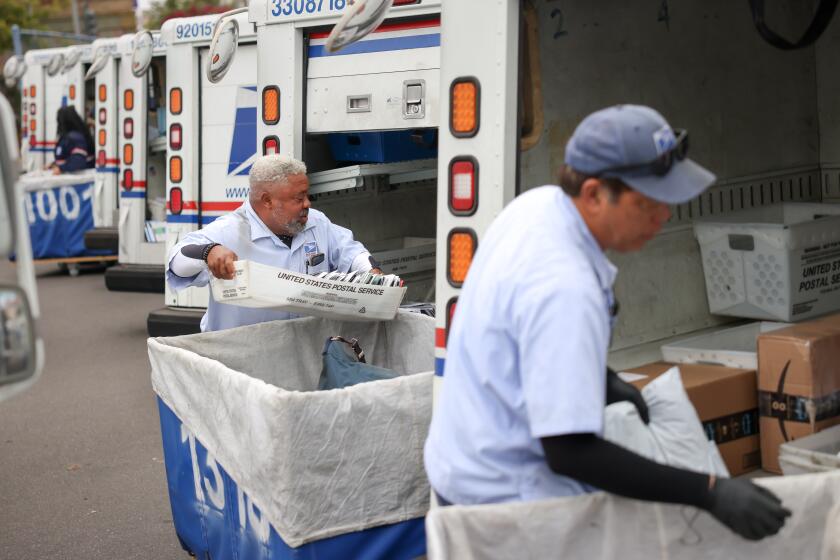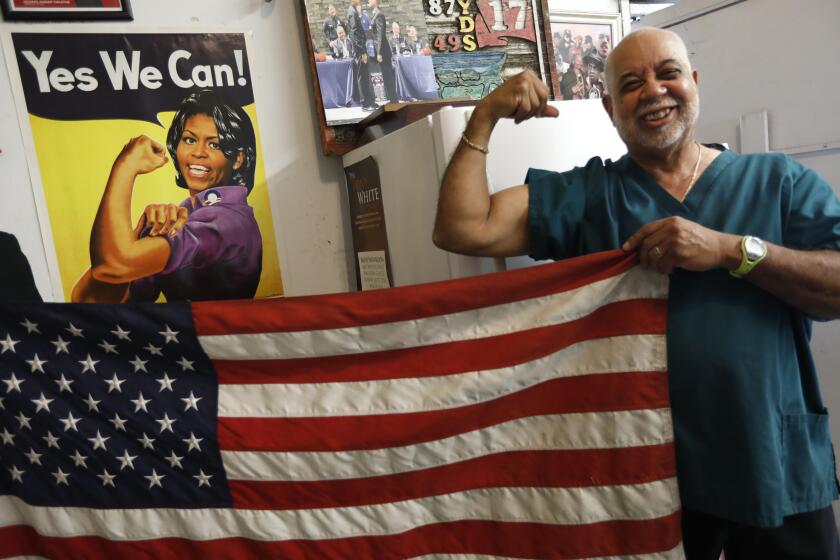Timetable for Chollas Cleanup Still Unresolved : Toxics: City and state officials will meet this week to decide whether more study is needed to determine the danger of the lead-tainted land.
- Share via
Almost two years after the city of San Diego promised to clean up lead-tainted land near Chollas Park that had been offered to the Navy as part of a swap, officials are still searching for a solution.
At best, cleaning up the 44-acre city-owned site will cost almost $1 million and be completed by year’s end, said Robert Epler, deputy director of the Refuse Disposal Division of the city’s Waste Management Department. At worst, the cost, in time and money, could be far higher.
The speed of the cleanup depends in large part on how the site is classified under state environmental laws. City officials classify Chollas Park as a non-hazardous incinerator ash site, in reference to the function it once served. State officials, who once viewed the site as non-hazardous, now say it may be hazardous because of the levels of lead found there.
Before the proposed land swap can occur, the state Regional Water Quality Control Board must approve the cleanup, which was supposed to be finished last year and has been postponed three times.
“Every time we thought we could take our hands off, step back and finish, we got stuck on some other detail,” Epler said. “It seemed like every time I turned around, somebody was asking for more data. It’s uncharted territory; we’re bouncing back and forth between representatives of local health agencies and state regulatory agencies.”
If the contamination is treated as non-hazardous, it could be encapsulated in 4 feet of clay, buried 10 feet deep. If the site is deemed hazardous, the city will have to do more studies and take more precautions, such as provide a liner to further protect the encapsulated material or completely remove the material.
In an effort to answer some of these questions, city officials will meet Thursday with members of the Water Quality Control Board. At the meeting, officials expect to determine whether additional studies are needed.
The city has spent $94,000 on studies so far, Epler said, but one expert says it may need to do more.
“I personally feel there needs to be more information submitted to us,” said Margo Boodakian, a water resource control engineer with the state board, which monitors water purity. Boodakian said she wants more information about the depth of the ground water at the site.
Four decades ago, burning garbage at dumps was common. But officials have since discovered that canned goods, which once had lead seams, leached the lead into the soil. Thousands of ash dump sites like Chollas exist throughout the United States, and experts are now realizing they may be dangerous.
“This is one of the first times that the question has been asked as to how to deal with this type of site,” Epler said. “We’re breaking new ground, and it’s been slow and tedious. We’re going back correcting past mistakes. This happened two decades before any of us began our careers. We’re scratching our heads and trying to figure out how to fix it.”
Tests indicate that portions of Chollas Park exceed permissible levels for lead and copper. According to state regulations, the levels of soluble lead should not exceed 5 milligrams per liter. Tests conducted at Chollas showed a range of 18 to 196 milligrams of soluble lead per liter. Although the state has established a permissible level for disposal, no such level has been established for health, said Sylvia Castillo, a civil engineer with the city’s Waste Management Department.
Inhaling and eating lead are considered potentially dangerous to children because it has been linked to mental retardation. But city officials do not believe the level found at Chollas poses a serious hazard.
“It would be a public safety risk if someone got in there and ate it for a year,” said Richard Hays, director of the Waste Management Department. “It’s not something I’d want kids to be in. It should be cleaned up before there’s housing. But it’s totally do-able; we’re going to do it and do it right before we turn it over to the Navy.”
The land swap, first announced in August, 1986, after three years of negotiations, would give the city a park and a jail near Miramar Naval Air Station, while the Navy would receive the Chollas land for the construction of 300 housing units.
The agreement would also allow the Navy to extend Miramar’s boundaries by 120 acres to the west and 160 acres to the east. The city would gain a 44-acre sports complex, 43 acres south of California 52 for a jail and a no-cost lease for 75 acres near Miramar to develop police and fire academy facilities.
The deal came to an abrupt halt after the Navy learned of the lead contamination.
“We don’t want to build any facilities over land that could be any type of problem,” said Capt. Dave Schlesinger, commanding officer of the Naval Facilities Engineering Command’s Southwestern division, which is responsible for all Navy construction in San Diego County.
The Navy, unable to proceed with building plans on the Chollas land, went ahead with two other housing projects on Navy-owned land, building 266 units at Miramar and 180 units on Coronado’s Silver Strand. But Schlesinger, who said he has been told by city officials that the Chollas site will be cleaned up by the end of the year, expects to be able to build on the parcel.
“We fully believe we will build on that site. I’d be very concerned if the city doesn’t meet that date,” he said. “We’re holding their feet to the fire. It’s a fairly large project; 300 units doesn’t come along every day.”
More to Read
Sign up for Essential California
The most important California stories and recommendations in your inbox every morning.
You may occasionally receive promotional content from the Los Angeles Times.










